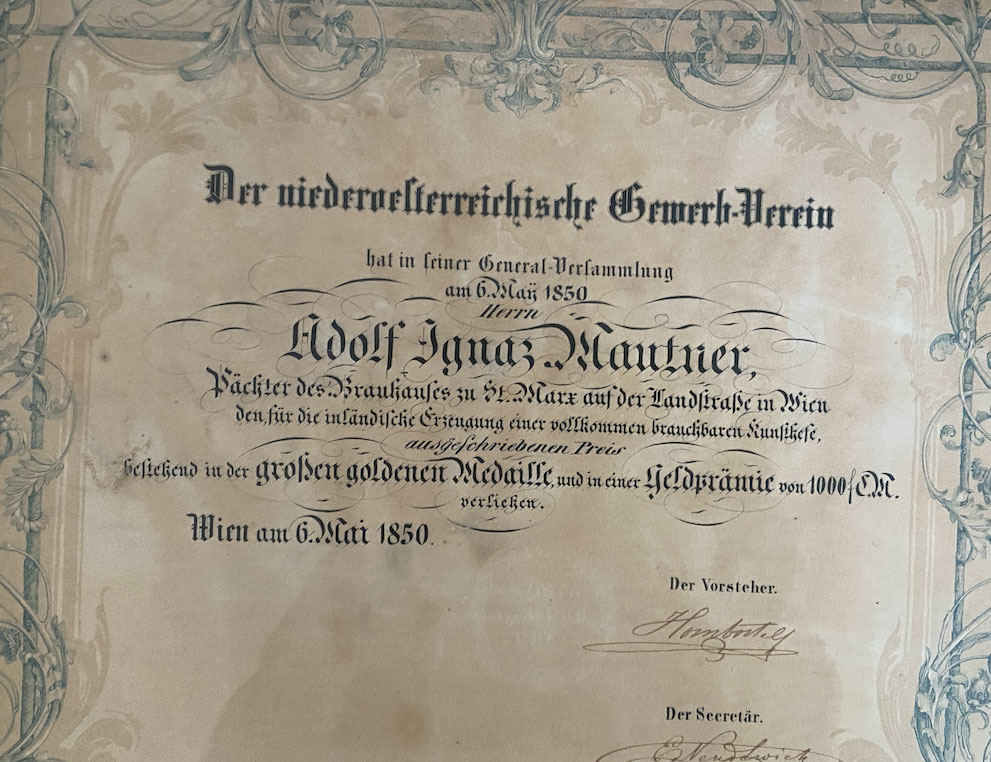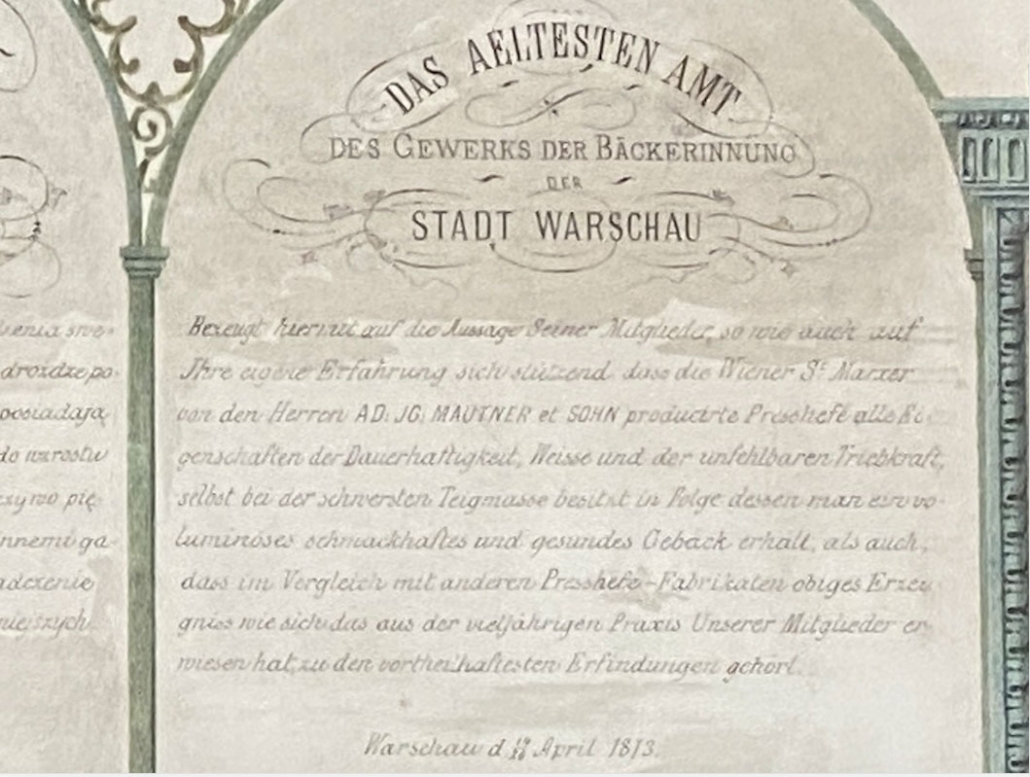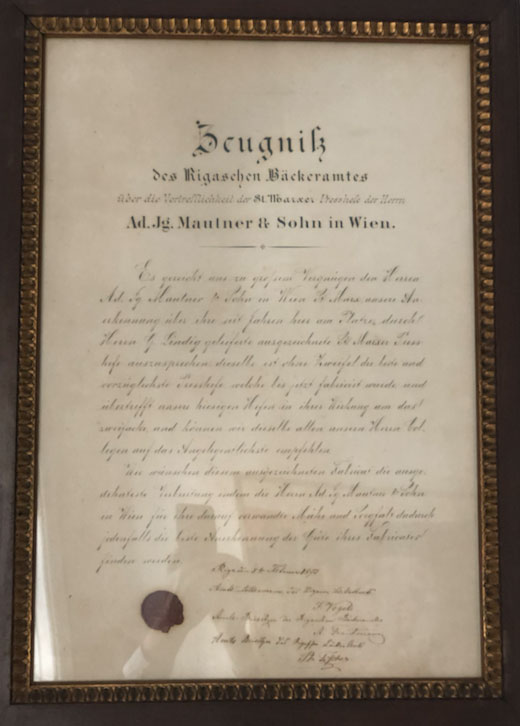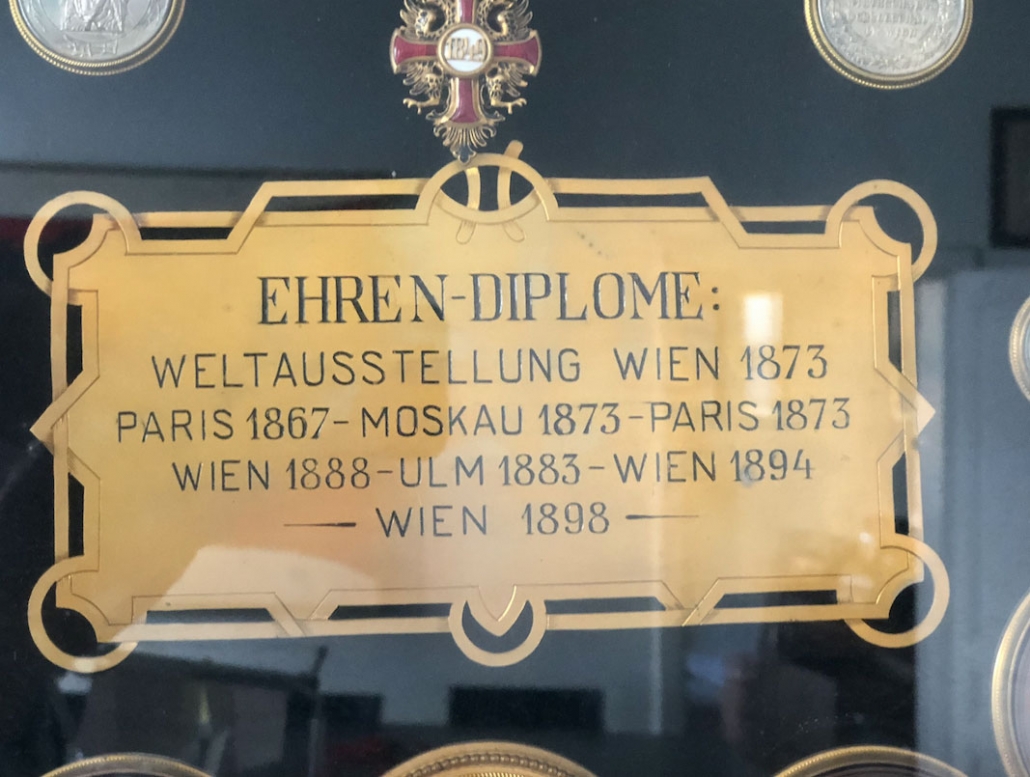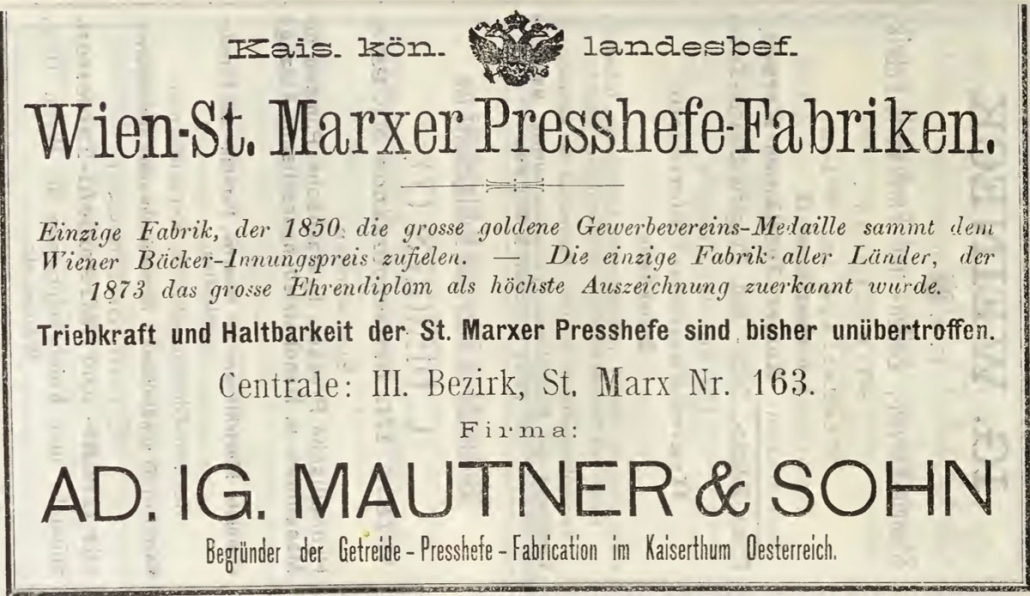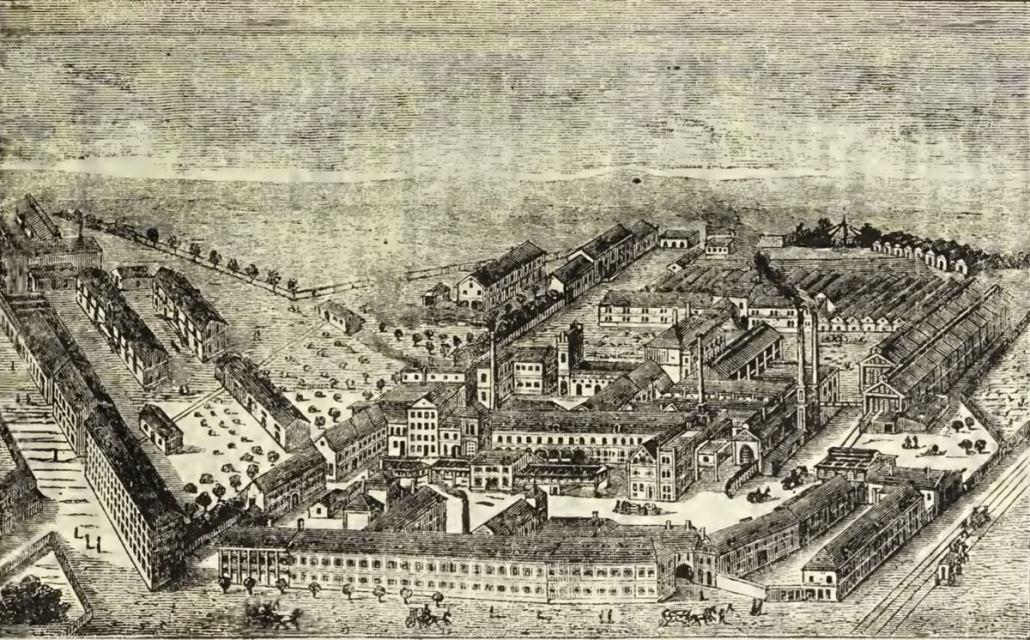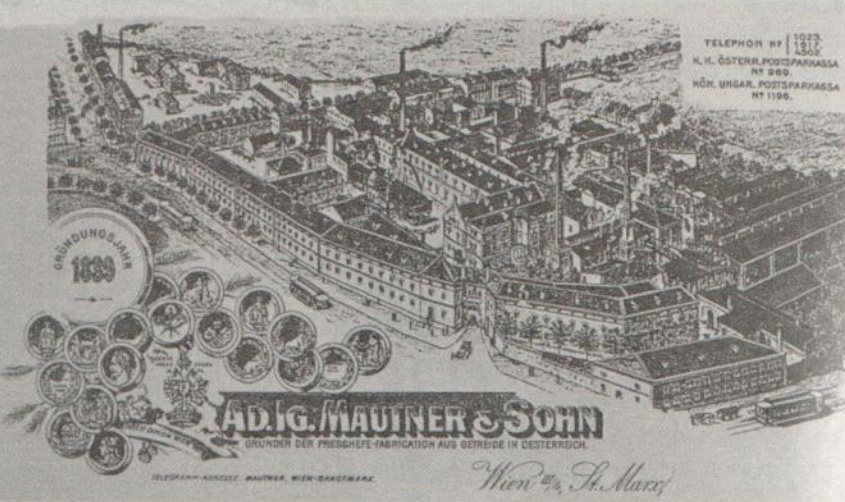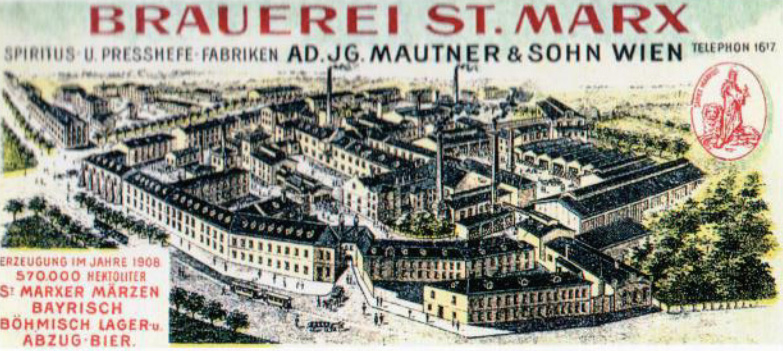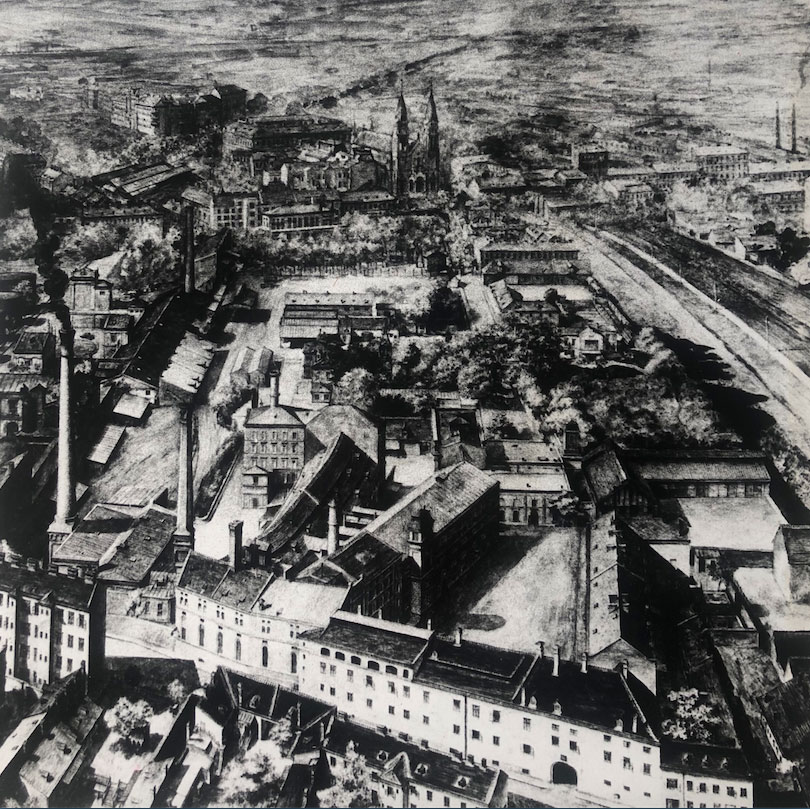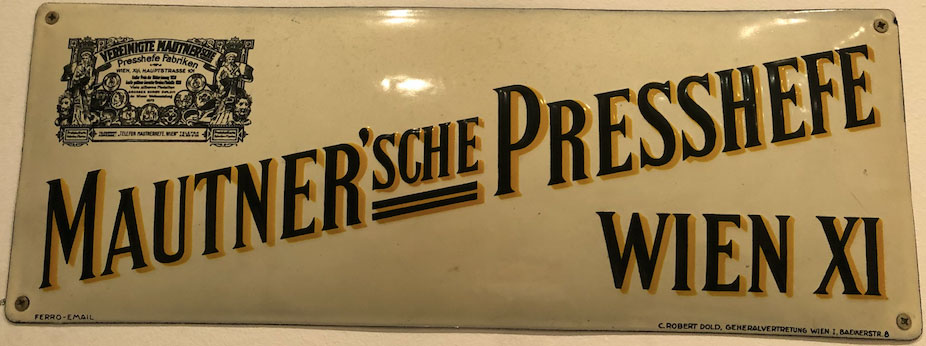Yeast
Yeast (baking yeast, baker`s yeast =“Germ”) is the most important biological raising agent for dough which is used for the production of bread, pastries and fine yeast-based desserts. Yeast is a unicellular plant that can reproduce by sprouting. The cell diametre is only a few thousandths of a millimetre, around 5 billion cells make 1 gram. The qualities of yeast which are interesting in terms of baking technology are
- the impetus for loosening the dough through the formation of carbon dioxide (carbonic acid) and alcohol and
- the aroma formation through various fermentation by-products, important for the smell and taste of bread, cakes and pastries.
Yeasts of various breeds are widespread in nature. For a modern bakering yeast, however, only cultivated yeast breeds that are specially bred in the laboratory are suitable.
This yeast is propagated in large fermentation tanks with strong aeration, in a nutrient solution that is made from sugar beet molasses and various nutrients. After the fermentation process was complete, the yeast was obtained from the mash by centrifugation as yeast cream using large separators and dewatered on rotating vacuum filters by using the system known worldwide as the “Mautner Markhof filter yeast process”.
The second main pillar of his entrepreneurial activity was just as important for Adolf Ignaz as the brewery and it also generated even higher profits. Although the invention of a new pressed yeast production method made him go down as a pioneer in the annals of economic history, even then he did not inherit success from the beginning.
Around 1837, some scientists such as Theodor Schwann, Friedrich Traugott Kützing and Charles Cagniard de la Tour proved independently of one another that yeasts – as microorganisms – are not only responsible for alcoholic fermentation, as for beer production, but also play a very important role for the production of basic food stuff such as white bread and all kinds of cakes and pastries. The bakers also needed yeast for the production of the famous Viennese white pastry, which they obtained from the breweries at that time. The top-fermented beer was fermented warm and drove the brewer’s yeast, as a thick foam, to the surface of the vessels, where it could be skimmed off, washed and used as bakering yeast.
However, the production of bottom-fermented beer with the introduction of cold fermentation soon created a dramatic bottleneck in yeast production. In fact it settled on the bottom of the vats and could be obtained after the beer had been drained, but the bakers could no longer produce tasty white bread because of its weak impetus, its dark colour and its bitter aftertaste. The resulting lack of yeast finally began to threaten the existence of the entire baking industry. It was now the task of the industry to find a cheap nutrient material in which the top-fermenting brewer’s yeast could be further cultivated.
The Viennese Bakers’ Guild announced a premium of one thousand guilders for an adequate baker’s yeast and the Lower Austrian Trade and Crafts Association supplemented that by ensuring the winner of the award of the great golden club medal. When Adolf Ignaz learned about that, it was his firm intention to introduce such a production. In 1845 a separate test bakery was set up for this purpose, but the quantity was still very low and of not very good quality. Compressed yeast was systematically produced in St. Marx as early as in 1847, but due to the unreliability of the results, no desirable commercial success could still be achieved. On the one hand, the level of fermentation chemistry proved to be inadequate, and on the other hand, the small number of customers was split up as a result of the rapidly emerging competing factories, even if they were unable to maintain their market position. In 1848 Adolf Ignaz allied himself with the young Westphalian chemist Julius Reininghaus, who was soon supported by his brother Johann Peter. They began to burn corn to the malt and rye mash, which not only made the yeast last, but was also cheap and more profitable. Thus the additive use of corn is the soul of the so-called Viennese process, which later became the first and the world’s leading industrial production method. In 1850 Adolf Ignaz won both prizes: They were unanimously awarded to him for his product, among several competing yeast types, because of the greatest impetus and durability, which also made it highly exportable. For the domestic production of a perfectly usefully artificial yeast they then received the prize money of 1,000 guilders and the gold medal of the trade association. Today you can hardly imagine how difficult it was […] to explore the hidden life manifestations of a microorganism – as it is represented by yeast. The modern biological investigation methods were still lacking and there was practically no useful literature. Indeed, Adolf Ignaz had to start from the beginning. Commemorative publication on the occasion of the family reunion on December 1, 1989
St. Marx was the first company in the world to produce a so-called “pressed yeast” that was independent of the breweries and that was to triumphantly spread around the world from there, as it could be used by bakers without restriction. Initially, the output of that “Viennese process” was 10 kilograms of yeast and 30 litres of alcohol from 100 kilograms of barley malt, grain and corn, but in the following two decades production was increased from the same amount of raw materials to 21 kilograms of yeast and 39 litres of alcohol. The use of corn was a brilliant idea of the research group because it could cushion the price fluctuations for the yeast price caused by different rye harvests. All that ensured a significant economic advantage. Up until 1850, the basic material used to produce compressed yeast was, besides malt, only rye. As the main food of the people, that type of grain was subject to tremendous price fluctuations, to which the pressed yeast price could not always smoothly adjust if the commercial sales development should not always suffer. Adolf Ignaz remedied that by discovering that corn could also be used as a substitute for rye on pressed yeast and alcohol. At that time, maize was only grown in Hungary as much as it seemed necessary to cover household needs. Therefore, at the beginning, the larger quantities of maize needed for the pressed yeast production had to be imported from Wallachia. The fact that Adolf Ignaz used maize instead of rye for yeast and spirit production gave the impetus to the fact that larger areas that had previously been fallow were cultivated with maize, thereby opening up a new sales area for Hungarian production. That discovery resulted in a saving of the rye, which was so necessary for people’s nutrition, as well as a price-reduction and price stability of the pressed yeast.
The yeast business soon blossomed, because not only did every domestic baker inquire about the product, but exports also boomed. At the 100th anniversary of Mautner’s compressed yeast factory, the following was proudly reported: There did not exist a fermentation with a greater impetus and longer stability, which means, one that was more transportable than the St. Marxer pressed yeast. Letters of thanks and appreciations came to St. Marx from cities many hundreds of miles away from Vienna. Summer heat and polar cold had affected the new yeast and did not harm it.
Adolf Ignaz Mautner was a visionary producer and Julius Reininghaus was a gifted researcher. Since 1851 they had the factory authorization for yeast production, which saved them a lot of official harassment and released them from all guild rules. Julius and his brother Johann Peter married the Mautner daughters Emilie and Therese. Together they founded the Reininghaus brewery in Graz in 1853 with the financial support of their father-in-law, which soon produced an as wide range as Mautner in Vienna. Adolf Ignaz devoted himself increasingly to yeast and spirit production and when he reached the limits of capacity in St. Marx, in 1861 he had to open a second (Simmeringer Rosenhof) and in 1864 a third (Vienna-Floridsdorf, Prager Strasse 20) location. Both branches were run by his third eldest son, Georg I Heinrich.
Spirit
Spirit is pure 94% alcohol (ethanol) which has been made inedible (denatured) in order to be exempt from the tax on spirits.
This high-percentage ethyl alcohol is obtained through alcoholic fermentation from raw materials containing sugar or starch such as fruit, grain, sugar beet, sugar cane or potatoes, and the subsequent burning of the mash. The pure substance is a colourless, easily flammable liquid at room temperature and, in contrast to spirits such as grain and fruit brandies, neutral alcohol is tasteless and odourless. It is produced on a large scale in the manufacture of beer by a fermentation triggered by yeasts.
After the abolition of the manorial system in 1850, Count Simche Sigmund Rapaport had already started producing spirit alcohol at the Rosenhof. The Mautner family acquired that business in 1861 and did not only produce yeast there (the brewery waste from St. Marx could be recycled), but also spirit. In order to eliminate the risk of fire when storing spirit in the previously wooden vessels, Adolf Ignaz was the first to use iron reservoirs, which were much denser and thus as well minimized the loss during longer storage. In that production, too, he proved himself as an industrial pioneer and gave it new impetus through the use of elliptical so-called planetary agitators. When the demand for his raw spirit sank around 1880, he began to produce refined compressed yeast spirit, which was lint-free and could be used to produce better spirits and especially fine liqueurs. He was the first to use potatoes and – as in yeast production – maize as starting products and the steam from the steam engine to distill the spirit mash. With the liqueur producers as a new target group, a further sales market could be opened up. After Victor’s death, the Floridsdorf family branch took over the management and Theodor I. and Georg II Anton expanded the yeast and spirit production by merging with the Harmer and Springer companies to form Mautner Markhof’s Pressed Yeast Factories.
Malt
In addition to hops and yeast, malt is a basic component of beer. Its colour, strength and taste are mainly determined by the malt – the higher the malt content, the more full-bodied and stronger the beer will be. Grain and malt look very similar, but before grain becomes malt, it goes through a relatively complex process, because the malt has to be extracted from the brewing grain in the course of malting. The grain of barley, by far the most important grain in brewing, consists of over 60 % starch and long-chain dextrins, but only about 2 % sugar. The conditions are not fundamentally different with other brewing grains such as wheat or rye. Since yeast cannot process starch, it only ferments sugar. The breakdown of starch into fermentable sugar happens during mashing, but the basis for this is created during malting.
With his malt house in Hodonín, where he had become the leaseholder of the imperial estates thanks to Emperor Franz Joseph, Adolf Ignaz was the most important employer in that region. In 1872 his son Georg I Heinrich bought a mill and, together with his brother-in-law Otto Freiherr von Waechter, expanded the yeast and spirit factory in Floridsdorf to include a malt factory, which operated under the name of “Waechter & Mautner” and was soon to become one of the largest in the Austro-Hungarian Empire. In 1890 it was sold to his brother Carl Ferdinand and worked exclusively for the brewery in St. Marx until 1913.


